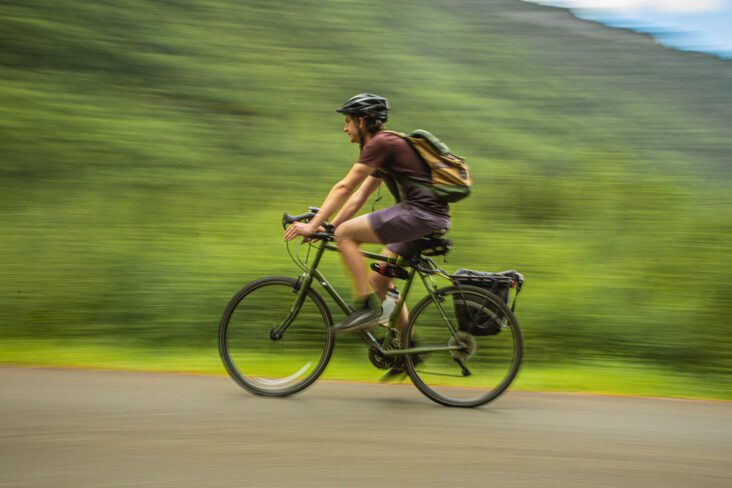How to Travel with Your Bike
If you are an ardent mountain biker, or if you are just starting out on this exhilarating journey, you may at some point face the prospect of carrying your bike on an adventure. You may be attending a bike competition overseas, going on a vacation up the mountains or upcountry where bike trails are wildly fascinating, or simply shipping a newly purchased tour bike to your hometown. In all cases, part of your journey will involve transporting your precious bike on an airplane, train, bus, or car. Though abnormally involving, a journey with a bike companion needn’t be a gut-wrenching experience as is the case with most cyclists. This article will guide you on the best way to travel with your bike.
Pre-trip priming
As with other endeavors, a trip with a bike can be a successful or failed adventure depending on the state your beloved two-wheeler will arrive on the other end of the transport line. Therefore, thorough preparation is vital if you want to be smiling after a journey with your bike. The most basic bike priming exercises include performing a thorough check-up on all bike parts to ensure they are in quaint condition and are functioning as expected as well as cleaning the entire bike comprehensively to see to it doesn’t soil other luggage.
As you stack up supplies for your journey, remember to start with the most important ones like mountain bike shorts, gloves, bike maintenance kit, bike repair/assembly tools (hex spanners or Allen keys) and mountain bike helmets. Kid bikes and folding bikes are extremely easy to carry as you travel because they easily fit into crammed car trunks. Tour and mountain bikes, on the other hand, present a more arduous challenge due to their relatively larger size and weight. It’s, for this reason, various public transport service providers have installed stringent laws governing bike transport.
Bike transit by bus
Most bus services prohibit the cartage of complete bikes but permit packaged and folding bikes to be transported at the coach driver’s discretion. This move is aimed at ensuring bikes don’t interfere with the smooth passage of passengers on the aisle.
Bike transport by train
A majority of train and subway services provide for cartage of packed, kid, and folding bikes. Also, most allow fully assembled bikes to be wheeled into coaches during off-peak hours when passenger densities are usually at a low. However, it’s wise to always check with them before booking as some restrict the number of bikes allowed per train couch.
Bike shipment by air
Shipping a bike via air transport is quite involving and nerve-racking when contrasted with train and bus transport mainly due to the inflexible bike cartage laws that have been put in place by airlines. Unlike in previous times when you could get away with wheeling your complete tour bike into a polythene bag, sealing and labeling it then checking it in at the airport desk, today, most airlines require you to disassemble your cycle, at least partly then seal it as a package
Before check-in. This requirement is aimed at:
Optimizing bike safety during luggage stacking in plane’s luggage bays, en route, and at customs clearance
Shielding passengers, luggage handlers, and other luggage from soiling if your bike wasn’t carefully cleaned
Providing for smooth bike passage along conveyor luggage systems at airport clearance.
How to disassemble your bike
If you want to travel with your bike by air, you’ll need to pack it down to its minimum to avoid exceeding the given weight and size allowance. Consequently, this will require you to partly take apart your bike before packaging it. The easiest way to achieve this involves:
Disconnecting the front wheel decreases the length of the bike. Make sure you bolt back the axle to shelter the fork from being warped by the shock of impacts
Unhinging the saddle then lowering the seat-post and stem to diminish your ride’s height.
Turning the mountain bike pedals inwards if they are foldable or disconnecting them if they are the rigid type, not only helps protect them from damage en route but also minimizes the width of the bike
Disengaging the handlebars from the stem and then turning them parallel to the frame to further shrink the bike’s width
Disconnecting the bike’s brakes then storing them separately with ample padding between disc brake pads
Detaching the rear derailleur from its hanger as a protective measure against damage as well as removing all fragile parts like lights and rear-view mirrors then placing them individually with sufficient cushioning to shelter them from smash-up
Securing the pump and water bottle onto the frame using PVC tape
Swathe the frame and stem with pipe lagging to shield them from grazing against other surfaces- this guarantees the longevity of your bike’s paint and gloss.
Bike packaging
There are numerous ways of packaging a bike. They include:
Using cardboard boxes
Hard-shell bike boxes
Fabric bike carriage bags and soft bike cases
Plastic bike bags
While the first and last methods are exceptionally cheap and readily available, the second and third strategies are more costly but higher in compartmentalization and impact shock muzzling. Given, the choice lies with the bike owner’s budget limits and preference.
In summary, it’s crucial that you always check in advance in to the bike transport and insurance policies of all the transport means you’ll be utilizing as you travel with your bike especially if you trip involves exchange trains and regional flights as these have extremely inflexible luggage restrictions. After all, too much caution never hurts.



